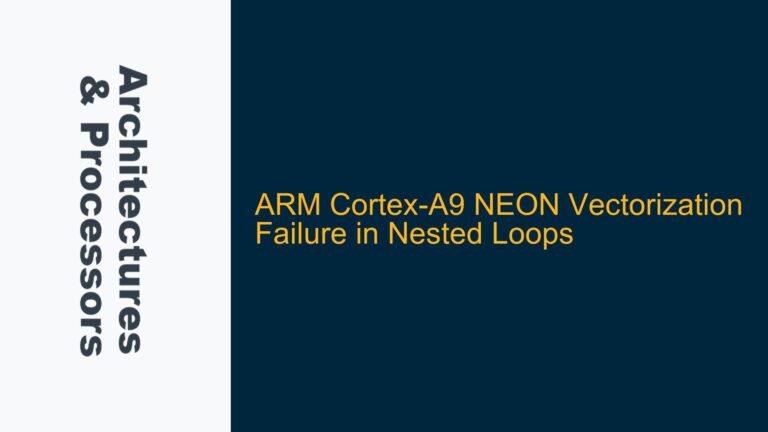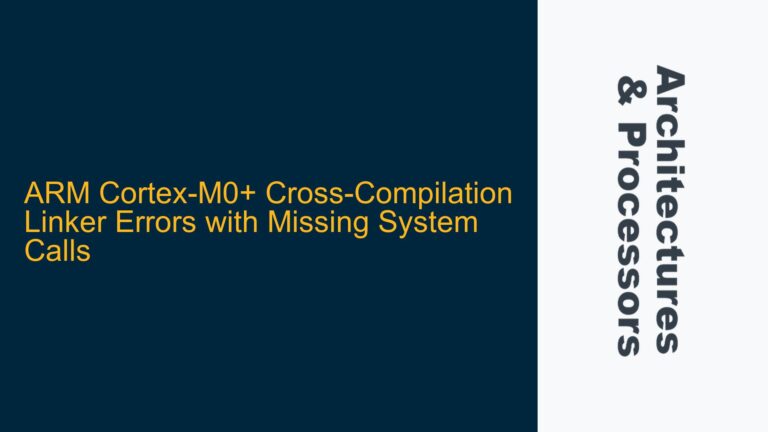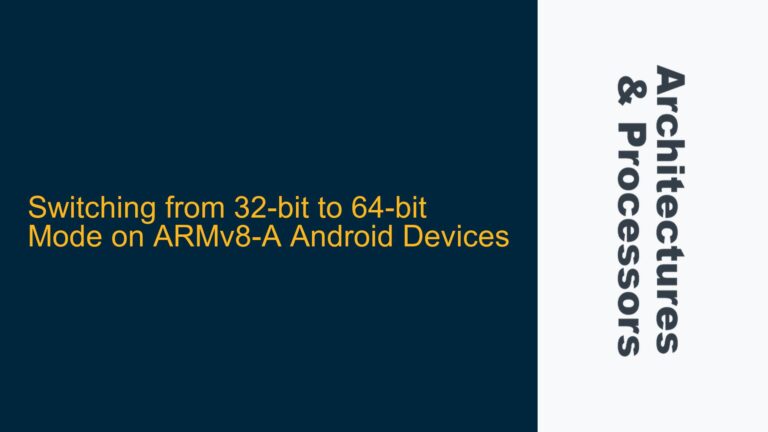ARM Cortex-M0 vs. Cortex-M0+ Feature Set and Upgrade Considerations
The decision to upgrade from an ARM Cortex-M0 to a Cortex-M0+ processor in an industrial automation system, such as a Programmable Logic Controller (PLC), involves a detailed analysis of the feature sets, performance improvements, and compatibility considerations. Both processors are based on the ARMv6-M architecture, which ensures binary compatibility between the two cores. However, the Cortex-M0+ introduces several architectural enhancements that can significantly impact system performance, power efficiency, and development flexibility.
The Cortex-M0+ core is designed to be a drop-in replacement for the Cortex-M0, with improvements in areas such as power consumption, instruction execution efficiency, and I/O handling. For instance, the Cortex-M0+ features a single-cycle I/O port, which allows for faster access to GPIOs compared to the Cortex-M0. This can be particularly beneficial in real-time industrial applications where quick response times to external stimuli are critical. Additionally, the Cortex-M0+ has a reduced number of pipeline stages (from 3 to 2), which not only lowers power consumption but also reduces the latency of branch instructions, improving the overall responsiveness of the system.
When considering an upgrade, it is essential to evaluate the specific requirements of the application. For example, in the case of the LPC1224FBD64 microcontroller from NXP, which is based on the Cortex-M0, the transition to a Cortex-M0+ based microcontroller like the MKE15Z256VLH7 could offer several advantages. The MKE15Z256VLH7 not only provides the architectural benefits of the Cortex-M0+ but also includes a rich set of peripherals that are well-suited for industrial automation tasks, such as multiple communication interfaces (RS485, IRED), enhanced timers, and advanced analog features.
However, the decision to upgrade should not be based solely on the core architecture. The peripheral set, memory configuration, and long-term availability of the microcontroller are equally important factors. For instance, the MKE15Z256VLH7 has a product longevity guarantee until 2031, which is a critical consideration for industrial applications that require long-term support and reliability.
Peripheral Integration and Single-Cycle I/O Port in Cortex-M0+
One of the most significant enhancements in the Cortex-M0+ is the inclusion of a single-cycle I/O port, which is part of the core design. This feature allows for faster access to GPIOs compared to the Cortex-M0, where I/O operations typically take multiple cycles. The single-cycle I/O port is particularly advantageous in applications that require rapid toggling of GPIOs, such as in communication protocols or real-time control systems.
The single-cycle I/O port is implemented as part of the ARM Cortex-M0+ core and is connected to the manufacturer’s GPIO IP through a dedicated interface. This interface, known as the Single-Cycle I/O (SCIO) port, provides a direct connection between the core and the GPIO pins, enabling low-latency access to external signals. The SCIO port is optional and may not be implemented in all Cortex-M0+ based microcontrollers, so it is essential to verify its presence in the specific device being considered.
In the context of the MKE15Z256VLH7 microcontroller, the single-cycle I/O port can be leveraged to improve the performance of communication interfaces such as RS485 and IRED. For example, in an RS485 communication system, the ability to quickly toggle the transmit/receive enable pin can reduce the overall communication latency, improving the responsiveness of the system. Similarly, in an IRED communication system, the single-cycle I/O port can be used to generate precise timing signals for IR modulation and demodulation.
It is also important to note that while the single-cycle I/O port is a core feature, the actual implementation and performance may vary depending on the manufacturer’s GPIO IP. Therefore, it is crucial to review the datasheet and reference manual of the specific microcontroller to understand the capabilities and limitations of the GPIOs.
Evaluating Long-Term Availability and System Longevity in Industrial Applications
In industrial automation systems, the long-term availability of components is a critical factor in the design and selection process. Industrial applications often have lifecycles that span decades, and the ability to source components throughout the product lifecycle is essential to ensure the continued operation and maintenance of the system.
The MKE15Z256VLH7 microcontroller from NXP is an example of a component that offers long-term availability, with a product longevity guarantee until 2031. This guarantee provides assurance that the microcontroller will be available for production and support for an extended period, reducing the risk of obsolescence and the need for costly redesigns.
When evaluating the long-term availability of a microcontroller, it is important to consider not only the manufacturer’s product longevity guarantee but also the broader ecosystem of support, including development tools, software libraries, and third-party support. For example, the MKE15Z256VLH7 is supported by NXP’s comprehensive development ecosystem, which includes the MCUXpresso IDE, software development kits (SDKs), and a range of evaluation boards. This ecosystem simplifies the development process and ensures that developers have access to the tools and resources needed to create robust and reliable industrial automation systems.
In addition to the microcontroller itself, the availability of compatible peripherals, such as communication interfaces, sensors, and actuators, should also be considered. The MKE15Z256VLH7 includes a rich set of peripherals that are well-suited for industrial applications, including multiple UARTs, SPI, I2C, and analog-to-digital converters (ADCs). These peripherals are essential for implementing the communication and control functions required in a PLC, and their long-term availability is critical to the overall longevity of the system.
Finally, it is important to engage with the manufacturer and distributor early in the design process to discuss the specific requirements of the application and to obtain detailed information on the availability and support for the selected components. This proactive approach can help to identify potential issues early and ensure that the chosen components meet the long-term needs of the industrial automation system.
Conclusion
Upgrading from an ARM Cortex-M0 to a Cortex-M0+ processor in an industrial automation system involves a careful evaluation of the architectural enhancements, peripheral integration, and long-term availability of the selected microcontroller. The Cortex-M0+ offers several advantages over the Cortex-M0, including improved power efficiency, faster I/O access, and reduced instruction latency, which can enhance the performance and responsiveness of the system. However, the decision to upgrade should also consider the specific requirements of the application, the availability of compatible peripherals, and the long-term support provided by the manufacturer. By carefully evaluating these factors, developers can make informed decisions that ensure the reliability, performance, and longevity of their industrial automation systems.






